There are many different fire extinguisher types available, but they are classified based on the four categories of fires being extinguished. It is very important to select the correct extinguisher for the type of fire to prevent personal injury and to prevent making the fire worse. The classifications of fires listed below are for the United States.
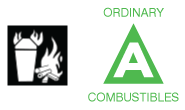
Class A Fires
Ordinary combustibles such as wood, paper, cardboard, cloth, and most plastics. These are the most common types of fires. In Europe and Australia, this is a Class A Fire.
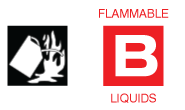
Class B Fires
Combustible liquids, greases, or gasses. In Europe and Australia, liquids fall in Class B while gasses fall in Class C.
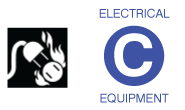
Class C Fires
Electrical equipment or other energized items. In Europe and Australia, electrical fires fall into Class E.
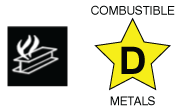
Class D Fires
Combustible metals, such as sodium, magnesium, and titanium (among others). In Europe and Australia these are also Class D fires.
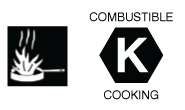
Class K Fires
Cooking greases or oils. These kinds of fires are technically part of Class C fires, but due to the special nature in which they occur they have been put into their own classification. In Europe and Australia, these are Class F fires.
While fire extinguishers can address a single type of fire (i.e. a Class A extinguisher), it is more common that they handle a range of fire types. The standard combinations are listed below and refer to United States classifications. Regardless of the combination listed, it is important that the extinguisher be UL tested and approved.
Class A Fire Extinguishers
Class A Fire Extinguishers are used on class A fires only. Typically, the fire fighting agent is water. Class A extinguishers cannot be used on other fire types because water poses a risk when used on electrical, liquid, gas, or metal fires. It is especially important that these extinguishers are not used on electrical fires because they can transfer electricity back to the user.
Class A/B Fire Extinguishers
Handling ordinary combustibles and liquids, Class A/B extinguishers use foam as the extinguishing agent. The Foam will leave a residue, which must be cleaned away after the fire is put out.
Class A/B/C Fire Extinguishers
The most common extinguishers, Class A/B/C extinguishers are usually used in offices, schools, and homes. They are often referred to as Multipurpose Fire Extinguishers. The agent used to put the fire out is a multi-purpose dry chemical called mono ammonium phosphate. The chemical will leave a residue and can cause corrosion of materials when used in a wet environment.
Also available are A/B/C extinguishers that use Halotron as the extinguishing agent. Halotron will not leave any residue and can be used around sensitive equipment.
Class B/C Fire Extinguishers
Used on liquid, gas, or electrical fires, Class B/C extinguishers use one of a few different extinguishing agents. Class B/C extinguishers that use Carbon Dioxide as the extinguishing agent fight the fire by removing oxygen from the immediate fire area. This can be dangerous to humans if used in an enclosed area, but it will leave no residue so it is generally used around sensitive equipment. Regular Dry Chemical extinguishers (sodium bicarbonate) are non-toxic and will leave a residue that is easy to clean up.
Class D Fire Extinguishers
Class D extinguishers use a dry power as the extinguishing agent. The type of powder is selected based on the type of metal fire that must be put out.
Class K Fire Extinguishers
Used in commercial kitchens, Class K extinguishers use a potassium acetate based agent that is safe to use on deep fat fryers or other food grease fires.
Cylinder Sizes and Material
Fire extinguisher cylinders come in a variety of sizes and materials. Sizes in the United States are identified by the capacity of the cylinder in pounds. Cylinder diameter and height are based on the capacity, but they sizes are fairly standardized. However, be sure to verify the cabinet size can accommodate the specified extinguisher.
Most fire extinguishers are made from an aluminum alloy. They are generally painted red, but other colors (white, chrome, etc) are available to help identify specialty from multi-purpose extinguishers. Some specialty extinguishers have different materials for additional safety. For instance, MRI-safe extinguishers cannot have any ferrous materials.


